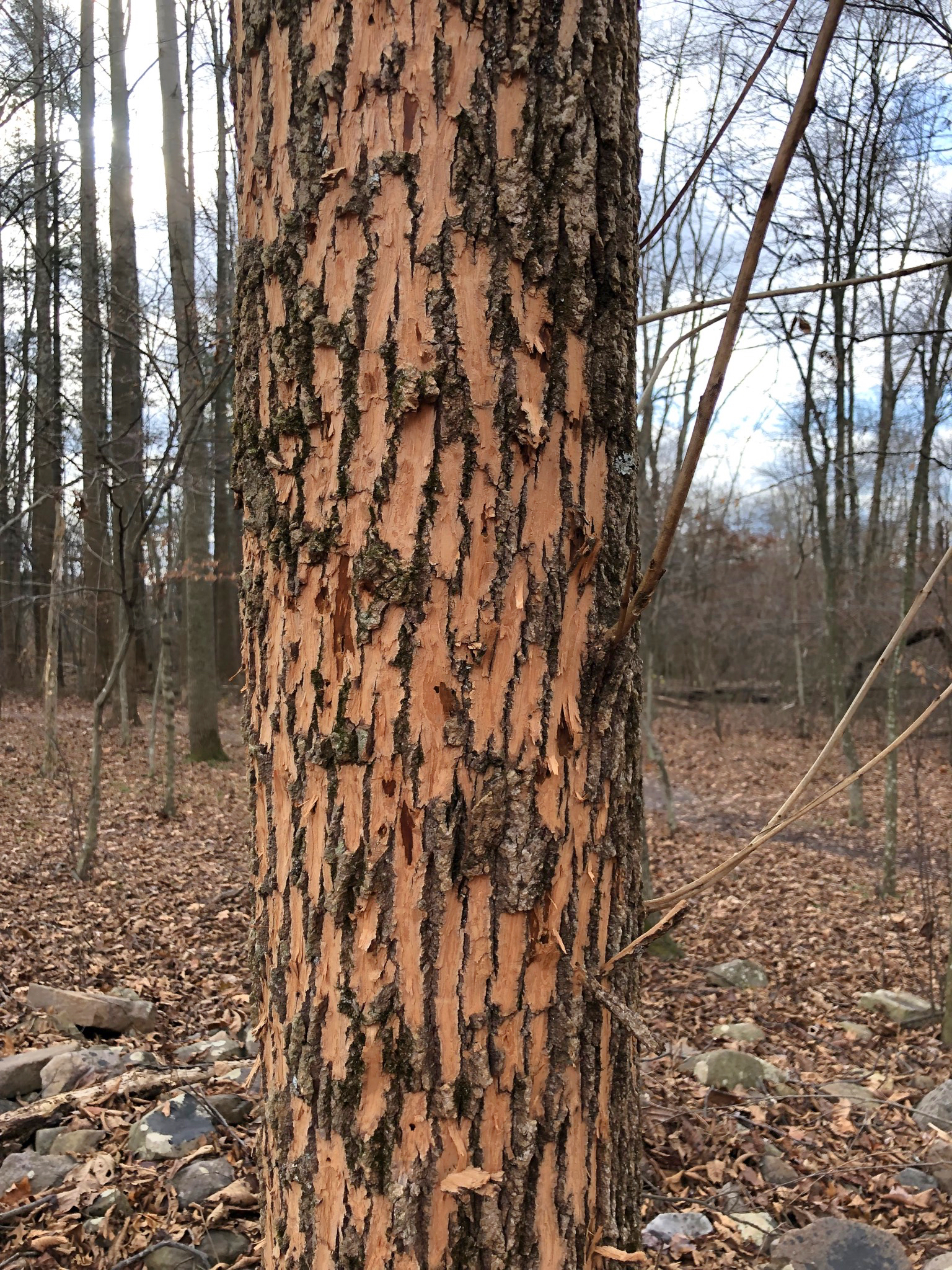Crow’s Nest: Emerald Ash Borer’s effect
By Daniel Barringer, Preserve Manager.

Emerald ash borer (EAB) is an insect that bores into the trunks of ash trees, eventually girdling the cambium, the living tissue of the tree. The tree dies, the forest composition changes. Ash, a dominant species in our floodplain forest, vanishes. The panorama above shows a swath of dead trees in the valley along French Creek. The trunk below shows signs of woodpecker damage as the birds try to feed upon the emerald ash borers in a tree that is already doomed.

The landscape today looks like this, below. Dead ash trees dominate. We’ve taken down over 100 trees along our road frontage to keep them from falling in the road; we still have about 100 more to go. In the woods they are left to die, become habitat trees for many species of insects and cavity-nesting birds.
What will replace the ash? In the short term, probably red maple (Acer rubrum). (Maple—sugar, otherwise known as rock maple—is already replacing ash for baseball bats.) But red maple is already very common in our floodplain woods so I worry that there will someday be a pest that decimates this host. Any monoculture is vulnerable. What then? What will be left to grow—boxelder, mulberry, and multiflora rose? What resources are there to encourage the forest we would like to see in the future? We’re currently managing invasive plants and deer over-browsing and doing a little replanting—will that be enough?

